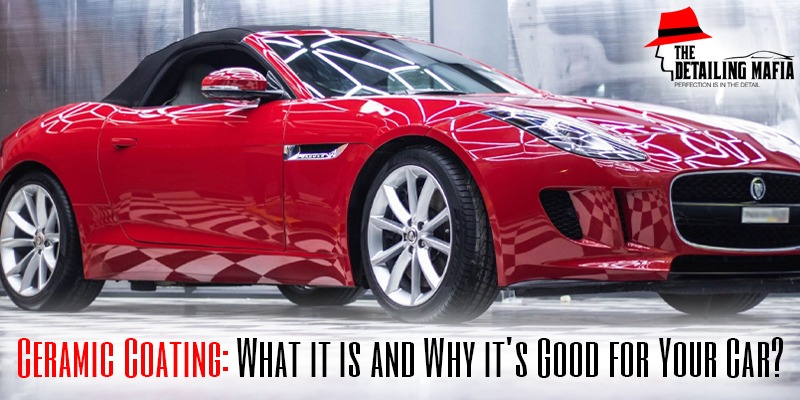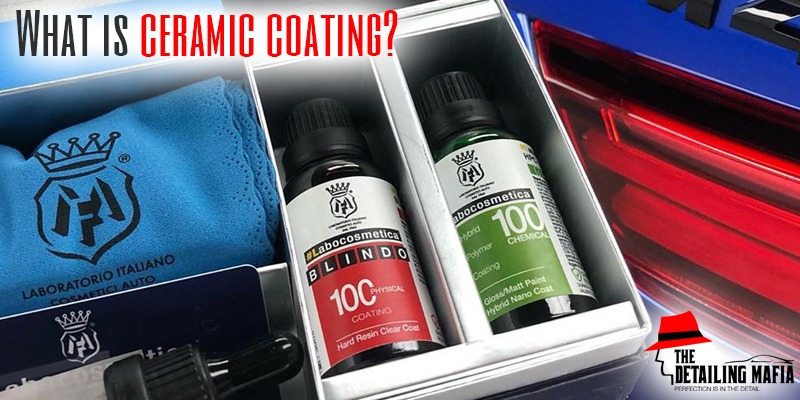When it comes to pampering your beloved two-wheeler, there’s more to it than just regular cleaning and maintenance. If you want your bike to not only look great but also remain protected from the elements, Teflon coating is the way to go. Teflon coating, also known as polytetrafluoroethylene (PTFE) coating, provides a protective shield that enhances the appearance of your bike while offering long-lasting protection. In this comprehensive guide, we’ll walk you through the process of Teflon coating for your bike, giving you insights into why it’s essential and how to do it right, with The Detailing Mafia as your expert companion.
Understanding Teflon Coating
Before we dive into the how-to guide, let’s first understand what Teflon coating is and why it’s beneficial for your bike.
What is Teflon Coating?

Teflon coating is a process where a specialized Teflon-based formula is applied to the exterior surfaces of your bike. This formula creates a protective layer that offers several key benefits:
- UV Protection: Teflon coating shields your bike’s paint from the harmful effects of ultraviolet (UV) rays, preventing color fading and oxidation.
- Water Repellency: The hydrophobic properties of Teflon coating make your bike’s surface repel water. Rainwater and moisture bead up and roll off, preventing water stains.
- Ease of Cleaning: Teflon’s non-stick properties make it difficult for dirt, grime, and insects to adhere to your bike’s surface. This results in easier and less frequent cleaning.
- Enhanced Aesthetics: Teflon coating provides a glossy finish that not only enhances your bike’s appearance but also makes it look as if it just rolled out of the showroom.
Now that you understand the advantages let’s move on to the step-by-step guide to Teflon coating your bike.
The Teflon Coating Process
Step 1: Bike Inspection
Before you start the Teflon coating process, it’s crucial to inspect your bike thoroughly. Look for any existing scratches, dents, or imperfections on the surface. Note that Teflon coating is not a solution for fixing existing damage, so these issues should be addressed separately.
Step 2: Cleaning
A clean surface is essential for the Teflon coating to adhere correctly. Follow these cleaning steps:
Wash: Begin by giving your bike a thorough wash to remove any dirt, grime, and contaminants.
Degrease: Use a degreaser to remove any oil or grease residues. Pay special attention to the chain, engine, and exhaust areas.
Rinse: Rinse your bike thoroughly to ensure all cleaning agents are completely washed away.
Dry: Allow your bike to dry naturally or use a clean, dry microfiber cloth to speed up the drying process.
Step 3: Surface Preparation
Proper surface preparation is crucial for the success of Teflon coating. Follow these steps:
Clay Bar: Use a clay bar to remove any embedded contaminants on the surface.
Polishing: If there are any minor scratches or swirl marks, consider polishing your bike’s surface to ensure it’s smooth and free from imperfections.
Step 4: Teflon Coating Application
Now comes the main part – applying the Teflon coating:
Applicator: Use a high-quality foam applicator pad to apply the Teflon coating. Ensure the pad is clean and free from any debris.
Product Application: Apply the Teflon coating product evenly onto the surface. Work in small sections, ensuring complete coverage.
Buffing: After applying the product, use a clean microfiber cloth to buff the surface gently. This helps in spreading the coating evenly and removing any excess.
Curing: Allow the coating to cure as per the manufacturer’s instructions. This usually involves leaving it untouched for a specified period, often around 24 hours.
Step 5: Final Inspection
After the coating has cured, inspect your bike once again. Ensure that the coating has been applied evenly and that there are no streaks or uneven spots.
Step 6: Regular Maintenance
To ensure the longevity of the Teflon coating and your bike’s protection, follow these maintenance tips:
Regular Cleaning: While Teflon coating makes cleaning easier, it’s still essential to clean your bike regularly to remove dirt and contaminants.
Avoid Harsh Chemicals: Use mild, bike-specific cleaning products to avoid damaging the Teflon coating.
Reapplication: Depending on the product used and your bike’s usage, you may need to reapply the Teflon coating every few months to maintain optimal protection.
Why Choose Teflon Coating for Your Bike?
Now that you know how to apply Teflon coating let’s revisit why it’s a great choice for your bike:
Enhanced Protection: Teflon coating forms a protective barrier against UV rays, water, and contaminants, preserving your bike’s paint and finish.
Aesthetic Appeal: The glossy finish provided by Teflon coating enhances your bike’s appearance, making it look brand new.
Ease of Maintenance: Cleaning your bike becomes a breeze as dirt and grime have a hard time sticking to the non-stick surface.
Longevity: Teflon coating is known for its durability, providing long-lasting protection.
Resale Value: A well-maintained bike with Teflon coating can fetch a higher resale value.
Conclusion
Teflon coating for your bike is not just a luxury; it’s an investment in its protection and aesthetics. By following this how-to guide, you can ensure that the Teflon coating process is done correctly, providing your bike with the ultimate protection and shine it deserves. So, roll up your sleeves, get ready to pamper your bike, and let the Teflon coating transform it into a shining masterpiece on two wheels, courtesy of The Detailing Mafia.






